Eighty Years Ago, New York’s World Fair Captivated Millions. Now, Two Enthusiasts Are Determined to Preserve Its Legacy
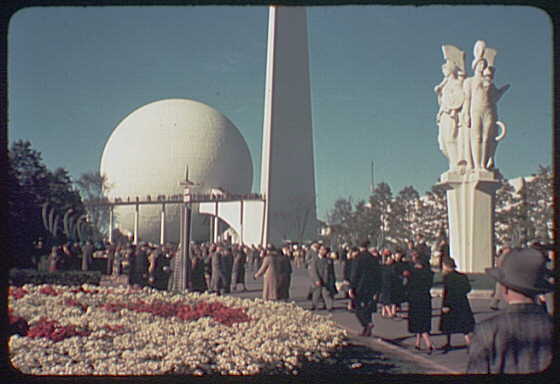

Katie White

What did the future look like in 1939?
If we look at the New York World’s Fair, held in Flushing, Queens, that year (and lasting into 1940), the “world of tomorrow” was meant to include scent-o-vision, lots of nylon fabrics, futuristic cars, and voice synthesizers in lots of varieties.
In the fair’s year-and-a-half-long run, more than 44 million visitors found their way through unique displays. Now, 80 later, the legacy of the fair still reverberates.
Keith Sherman and Roy Goldberg, the founders of gallery Helicline Fine Art—and devoted collectors of ephemera relating to the 1939 fair—believe the fair’s utopian vision has a resonance today.
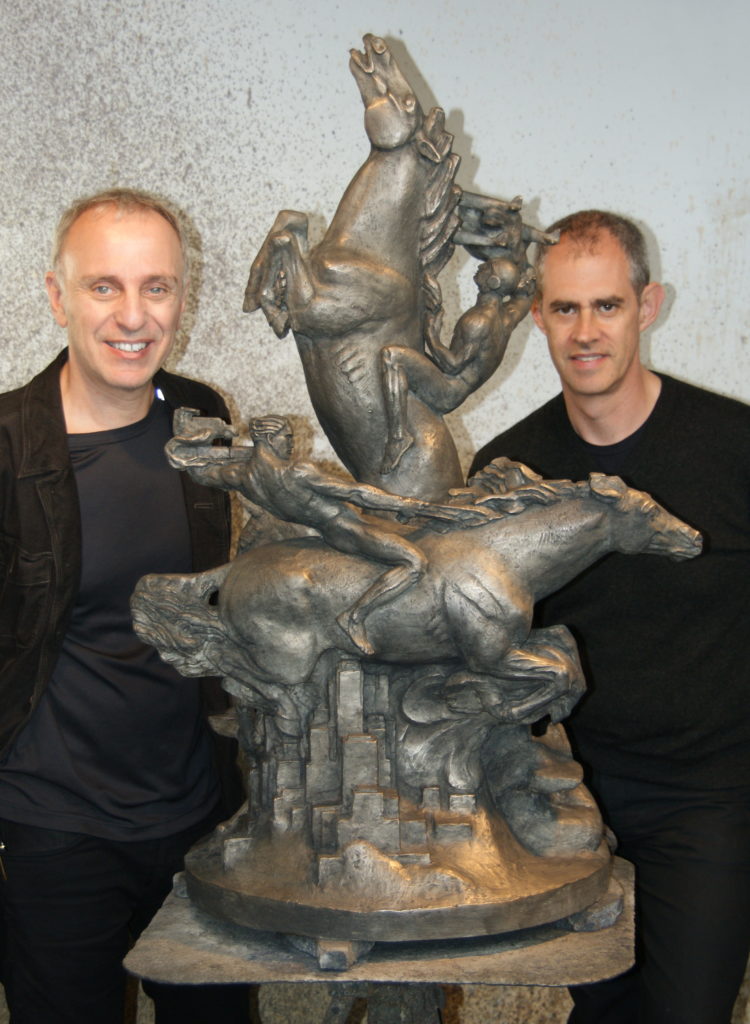
Ray Goldberg (left) and Keith Sherman (right) pictured with a contemporary casting based on Charles Beach’s 1939 Sculpture.
“Following the worst days of the Great Depression, the ‘World of Tomorrow’ theme bravely forecast a bright new future despite the gathering storm of World War II,” the couple write.
“These visions included an overwhelming array of Modernist art and architecture, led by the Trylon and Perisphere, the fair’s 60-some-foot sculptures. The fair depicted humanity at work, in harmony, mastering the complexities of a new age.”
Over the years, the dealers, who specialize in work from the 1930s and ’40s, have built a mind-bogglingly comprehensive collection that can described as a time capsule of the fair itself. An entire room of their upstate New York home is devoted to the stuff.
To commemorate the 80th anniversary of the fair, we caught up with the two passionate collectors, who toured us through some of their prized fair ephemera, which they are hoping to have placed with a museum or institution.
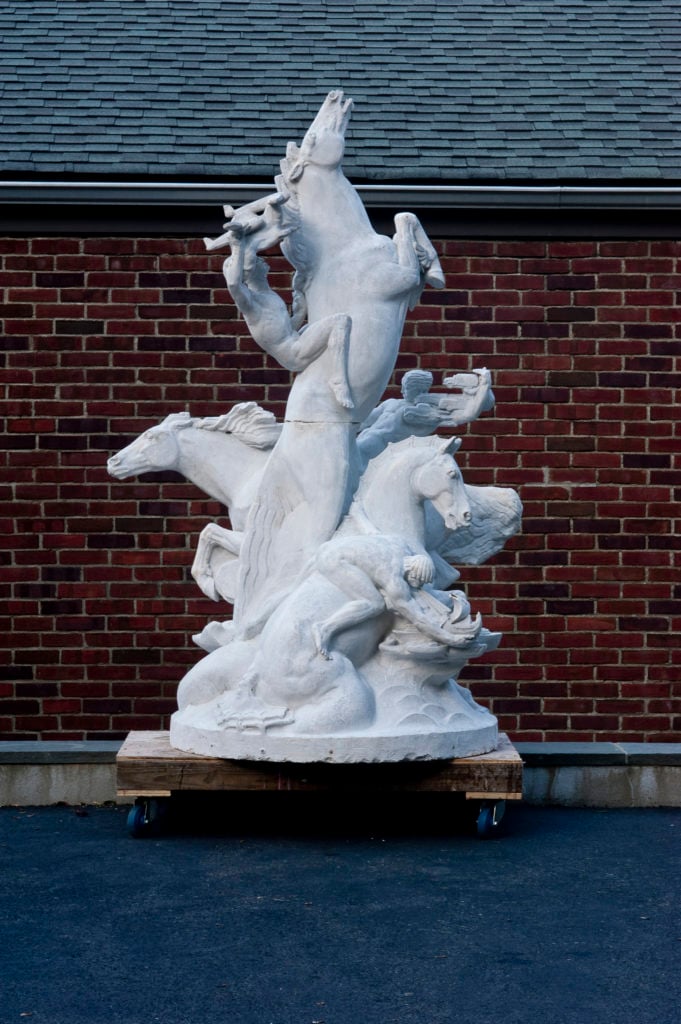
Chester Beach’s original 1939 plaster model of Riders of the Elements. Courtesy of Helicline Fine Art.
“The Chester Beach sculpture is the star of the collection. Beach was an extremely successful artist in his day. He created massive public art projects for the original AT&T Building and the Brooklyn War Memorial. When the fair opened in 1939, a 42-foot [version of this work] stood at the intersection of the Court of Ships and the Avenue of Transportation.
“This work of art is the embodiment of a moment when everything in the world seemed possible. Like most of the fair’s buildings, monuments and outdoor sculpture, it was razed after the fair closed in October 1940.
“This is the original work, a plaster maquette 80 inches tall and 52 inches wide, that was enlarged to be exhibited at the 1939 World’s Fair. The work, magnificently crafted, is the quintessential WPA-era sculpture.”
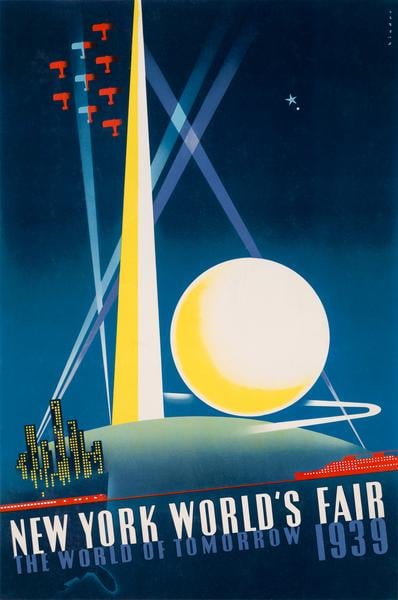
Joseph Binder’s World’s Fair poster design. Courtesy of Helicline Fine Art. The 1939 New York’s World Fair was the first devoted to visions of the future.
“This is the piece that began our obsession with the 1939 World’s Fair.
“When Roy and I moved into our first apartment on 86th Street, in a gleaming art deco building, we had dark brown furniture from college and no sense of taste. We began spending lots of time at the Strand Book Store in the East Village to learn what interiors looked like in 1929, the year our building was constructed. We discovered Art Deco, the Machine Age, the WPA, and the 1939 World’s Fair. This poster captivated us. We responded to the simple angular lines, the shapes and the color.
“Before the internet, something called flea markets and antique shows existed. We traveled to many in the New York area and made holidays around shows throughout the country. We started finding art and objects from the fair. We became rather obsessive. We still are.”

Harry Lane, World’s Fair Construction. Courtesy of Helicline Fine Art.
“We found this large unsigned panting at a country auction. We recognized the buildings from the 1939 World’s Fair and thought it would make a happy addition to the collection. In the process of restoring the painting, a signature emerged, by [Harry Lane], an artist who we have two works from in our collection. Lane has works in the collections of the Metropolitan Museum of Art, Worcester Museum, Museum of Fine Arts in Boston, among other institutions.”
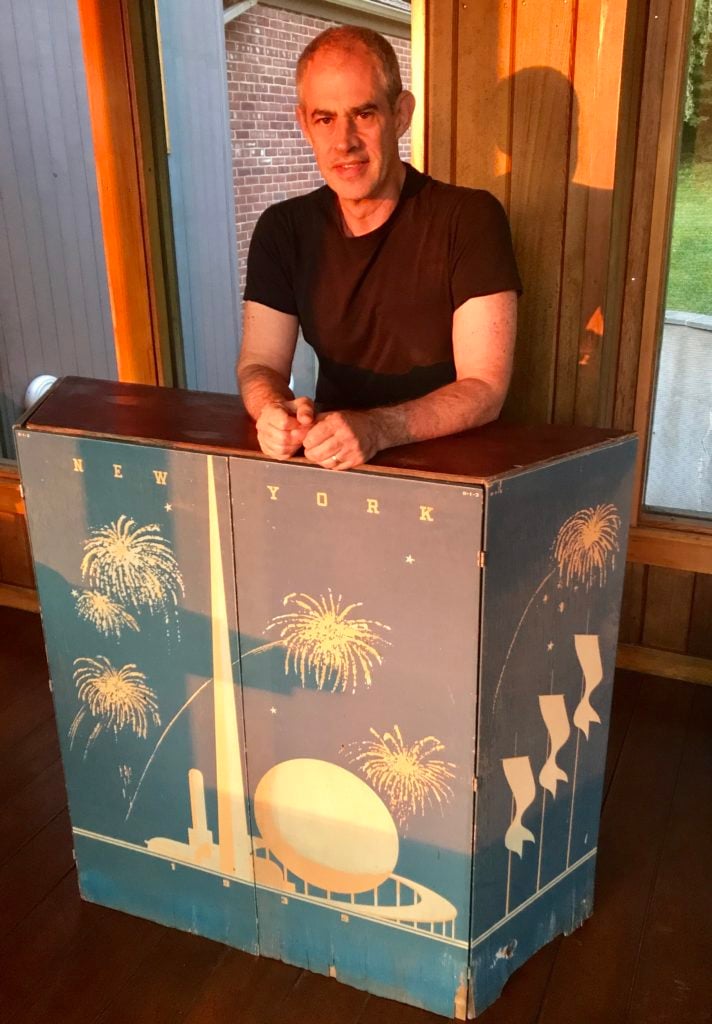
Dealer and collector Keith Sherman takes a seat behind an New York World’s Fair information desk. Courtesy of Helicline Fine Art
“Look at this. It’s just fabulous. Imagine a perfectly dressed young person giving directions and handing out brochures to the attendees.”

Al Hirschfeld, Sooouvenirs. Published in the New York Times Magazine (1939). Courtesy of Helicline Fine Art.
“Al Hirschfeld was a famous American caricaturist, known for his black-and-white portraits. A business associate of ours was Hirschfeld’s publicist for the last 15 years of his life and continues to represent the Al Hirschfeld Foundation today. This sensational drawing was acquired from the foundation.”
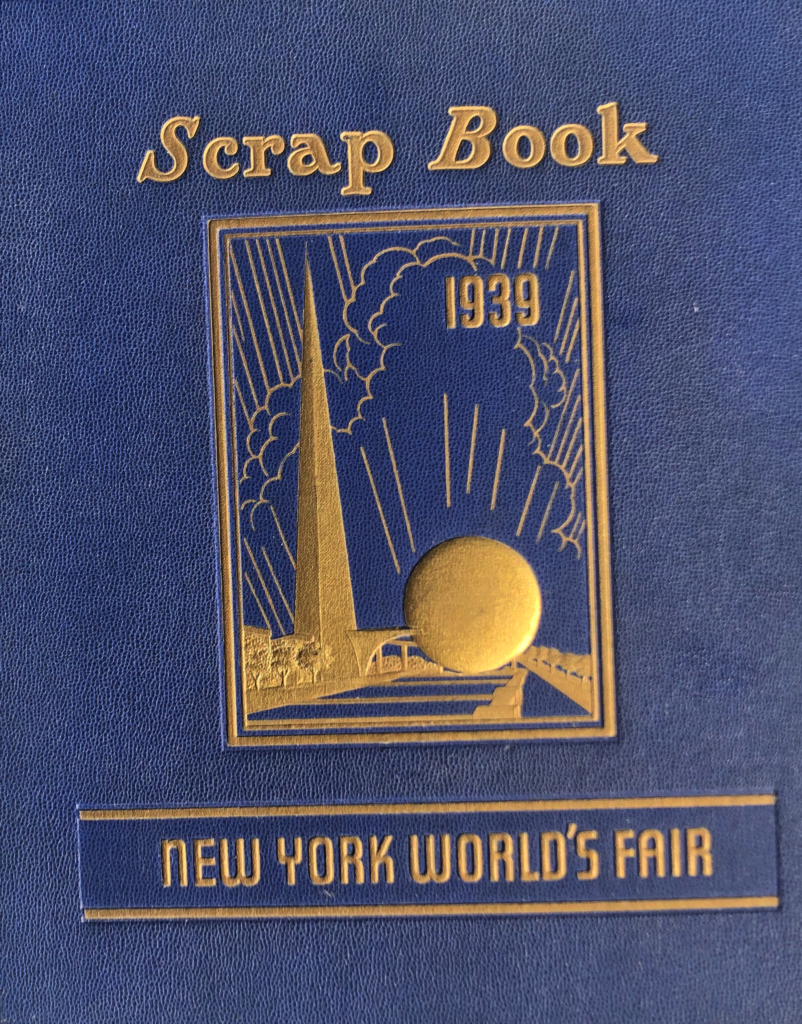
1939 New York World’s Fair Scrapbook. Courtesy of Helicline Fine Art.
“This scrapbook is one of the prized elements of the collection. Its pages burst with handwritten personal anecdotes about the fair and its attractions, photos, hand cut-out newspaper articles, magazine stories, tickets, and brochures. It’s clear that the person who made this visited the fair several times. It’s crafted with great detail and enormous love. We love the authenticity it represents.”